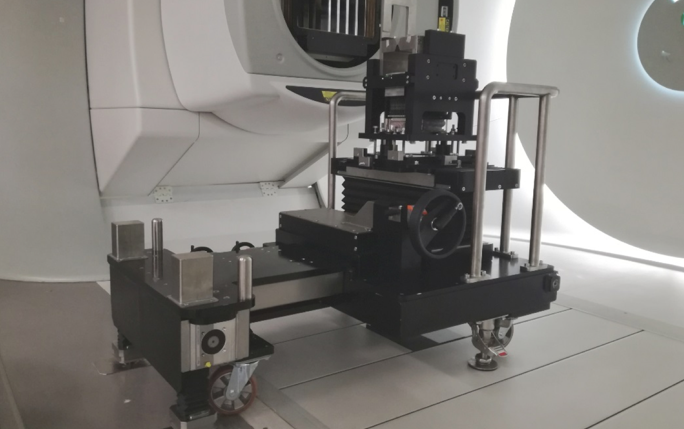New positioning system for the prompt gamma camera enabling more precise proton range verification delivered to OncoRay

Johannes Petzoldt has successfully completed work on a new positioning system for the prompt gamma camera, the focus of his OMA project. The new system was delivered and installed this August at OncoRay in Dresden allowing for more precise verification of the proton range during patient treatments compared to the previous positioning device. The prompt gamma camera can now be also positioned under the treatment couch allowing for the imaging of prostate treatments whereas so far only brain and head & neck patients could be monitored.
The new system is based on additional docking points that are installed in the floor of the treatment room. The moveable part of the system in which the camera is mounted can then be connected to the docking points to ensure a robust and more reproducible positioning of the camera with respect to the beam isocenter. During the project phase, Johannes defined the requirements of the trolley, based on the experience made from clinical application of the previous version, and managed the design and manufacturing process in collaboration with a subcontractor in Belgium.
During the installation of the system in Dresden, Johannes received support from his IBA colleagues. After successful installation of the docking station, the position of the camera within the trolley was calibrated and validated with the collaboration partners from OncoRay. The position of the camera was adjusted in 6 degrees of freedom using the in-room stereoscopic X-ray system that is also used for patient alignment. The improved positioning accuracy significantly reduces the uncertainties of the PG measurements allowing for a more precise detection of range variations during patient treatment. The first patient treatments with the new trolley are planned for end of this year.
Johannes would also like to take the opportunity to thank everyone who contributed to this project: the colleagues from OncoRay, IBA, Karl Hugo, and Aeriane!